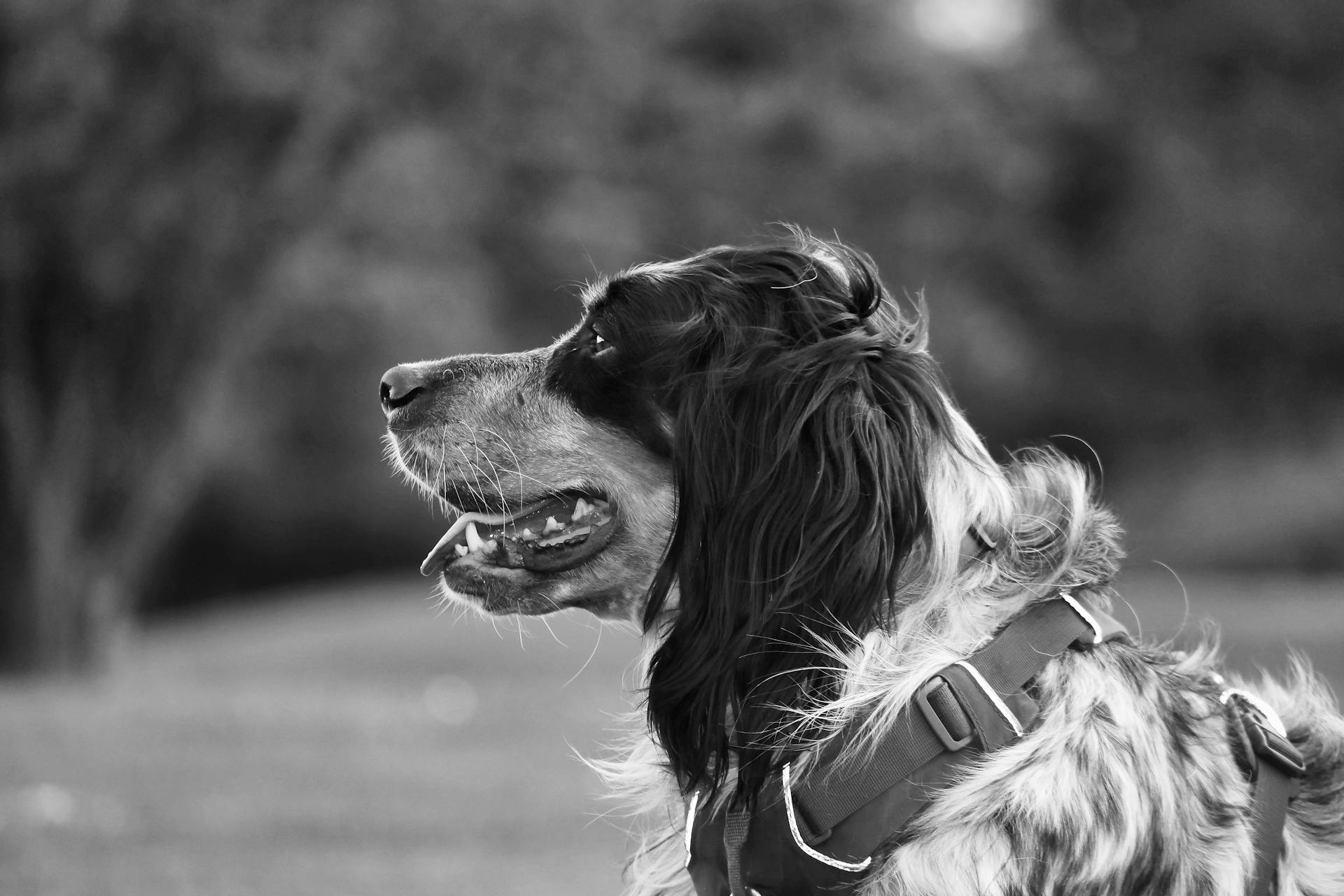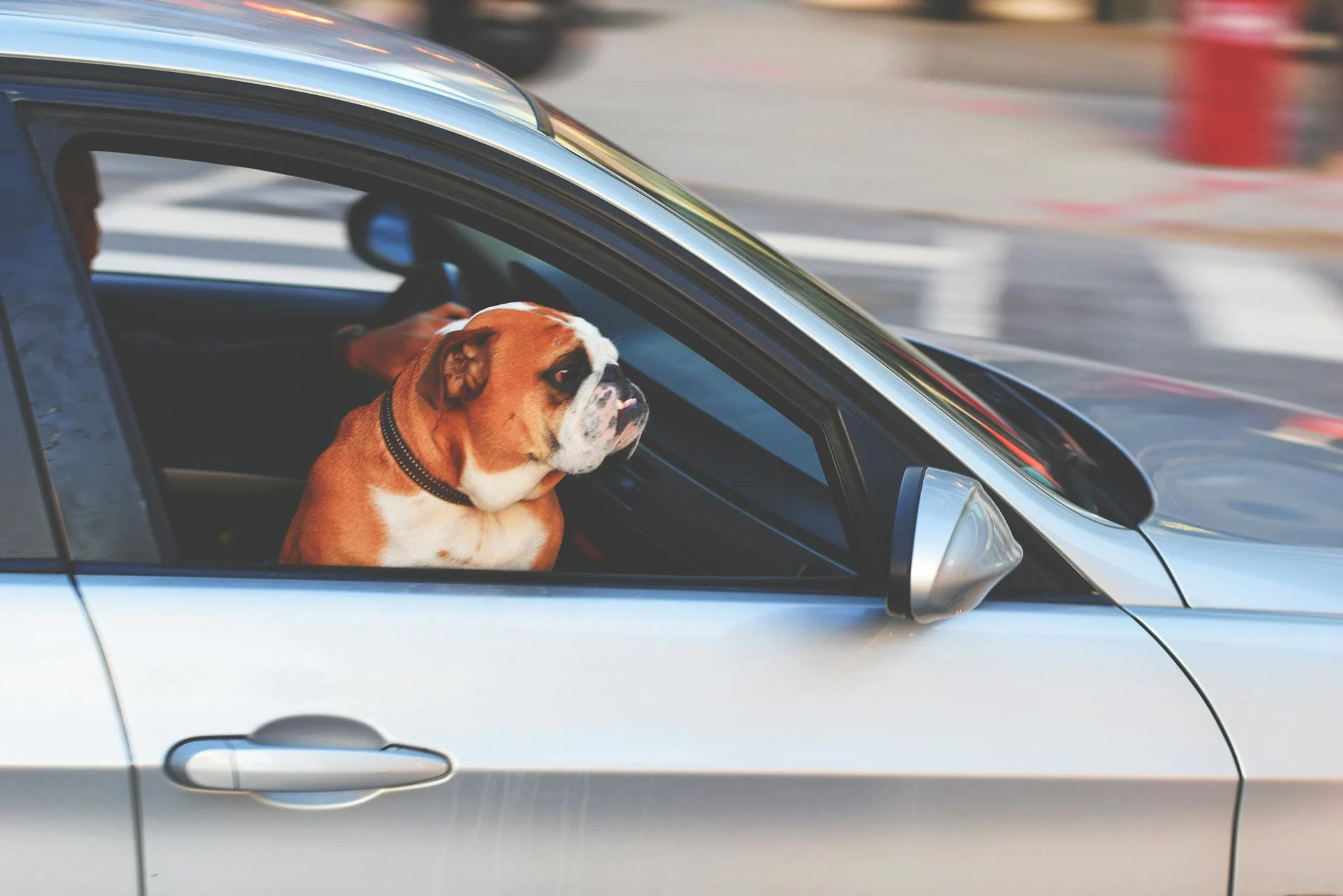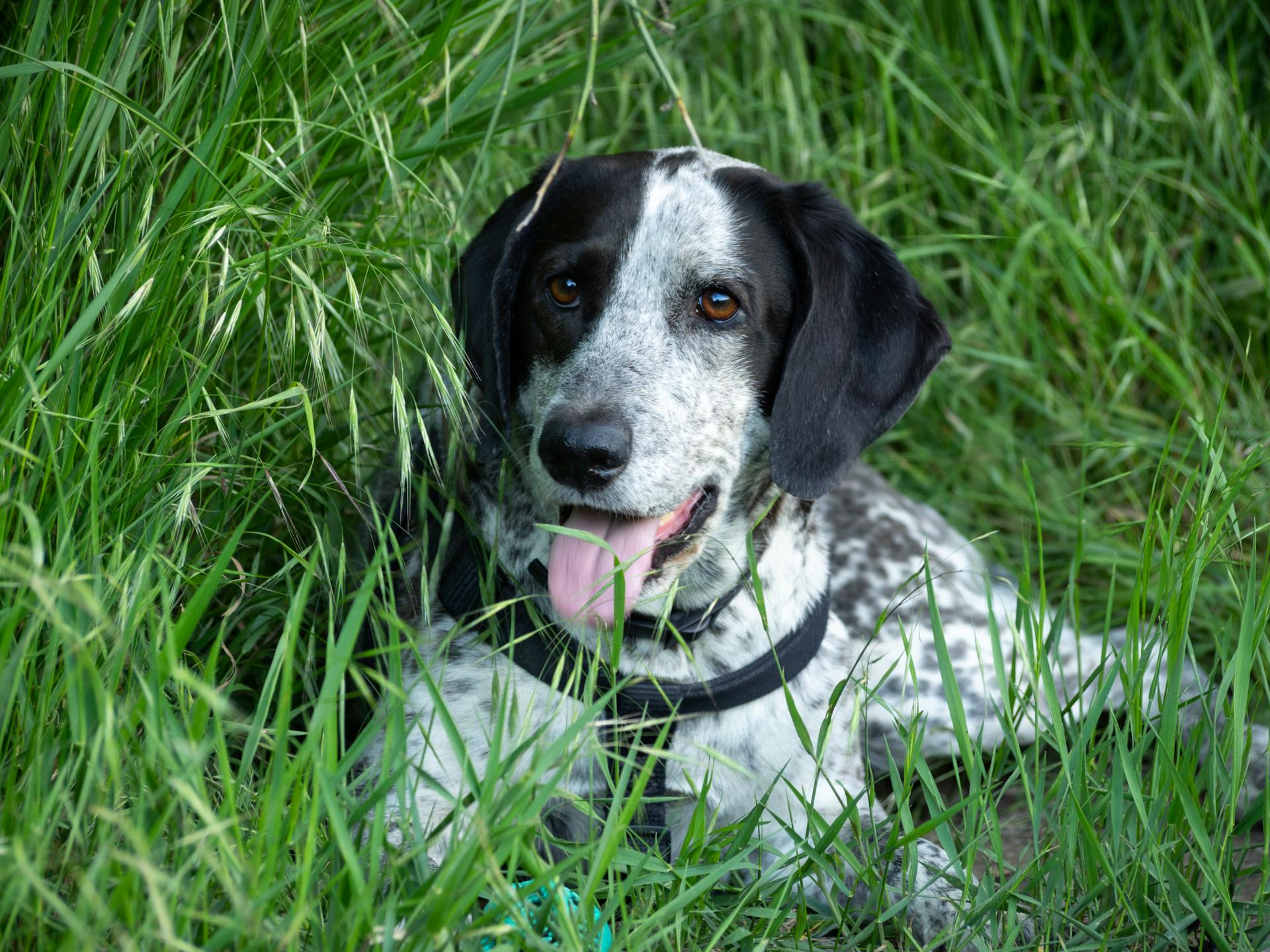
The English Pointer is a versatile and energetic breed that's perfect for active families or hunters. They originated in England in the 16th century.
Originally bred for hunting small game, English Pointers are natural retrievers with a strong instinct to chase and catch. They were highly valued for their ability to track and point game.
English Pointers are medium to large-sized dogs with a muscular build and a short, smooth coat that requires minimal grooming. They typically weigh between 45-65 pounds and stand 23-28 inches tall at the shoulder.
Their short coats come in a variety of colors, including liver and white, lemon and white, and black and white.
Quick Facts
English pointers are a medium-sized breed with a strong and athletic build, originating from Europe as versatile hunting dogs. They have a sleek coat, usually short and dense, often with distinct patterns like liver, lemon, or orange.
Their friendly and affectionate nature makes them a great companion for active families, and they're also highly intelligent and eager to please. Pointers are prone to certain health issues, including hip dysplasia and eye problems.
Here are some key stats about English pointers:
- Lifespan: 12 to 15 years
- Size: Medium-sized
- Speed: Up to 35 miles per hour
- Stamina: Can run 10-20 miles in a single day
Fun Facts
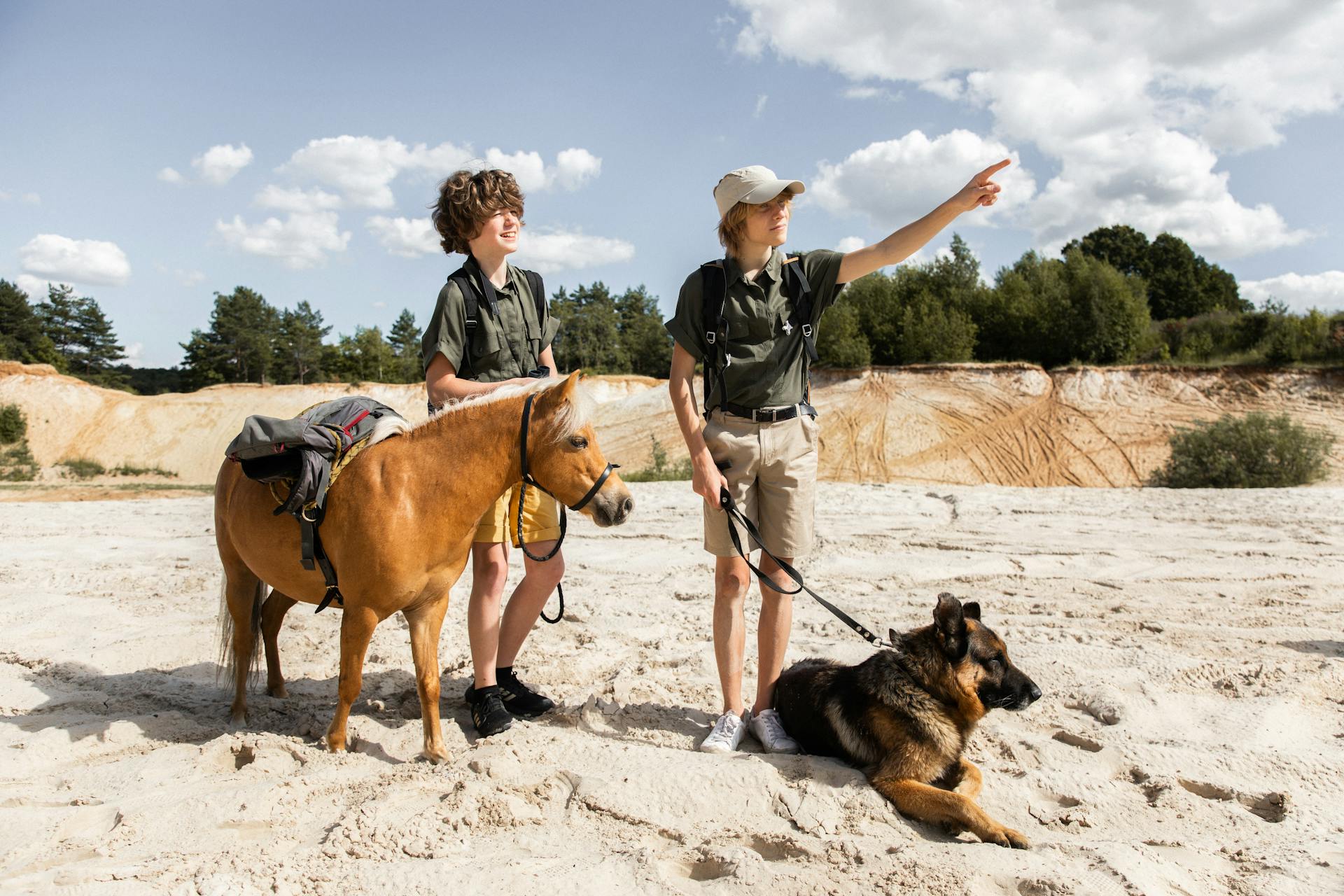
English pointers are quite the remarkable breed. They were the first dogs to stand game, which means they'd locate hidden prey and point in its direction.
Here are some key stats about their speed and stamina:
- They can run up to 35 miles per hour.
- Healthy pointers can run 10-20 miles in a single day.
English pointers have a rich history, and it's interesting to note that they were one of the first dog breeds recognized in America. The American Kennel Club recognized the breed in 1878.
By the Numbers
The English Pointer is a breed that's all about balance and versatility. They come in a range of sizes, with larger males standing 28 inches tall and weighing up to 75 pounds.
Their life expectancy is impressive, ranging from 12 to 17 years. This means they can be a long-term companion for many families.
English Pointers are known for their high energy levels, but they're also surprisingly quiet and even-keeled. They make great house pets and are very affectionate.
A GPS collar may come in handy when tracking their adventures through the field and dale.
Breed Overview
This breed is prized for its speed, ability to go all day in the field, and personable nature. It's a loyal companion that loves people and makes an excellent family dog.
The English Pointer is a sturdy and energetic breed that's perfect for active families with children. It's also an excellent watchdog, sounding the alarm at anything out of the ordinary. With its high intelligence and short, easy-care coat, it's a great choice for many families.
Here are some key facts about the English Pointer:
The English Pointer is a breed that needs consistent, ongoing training and an hour or two a day of play, walks, or other exercise. It's a high-energy breed that requires a lot of physical and mental stimulation to prevent boredom and destructive behavior.
Suggestion: English Pointer Mix Dog
Care and Feeding
English pointers need a lot of exercise to stay happy and healthy. They require at least an hour of exercise per day, and more if possible, to burn off their high energy.
See what others are reading: English Bulldog Exercise
A good rule of thumb is to give them plenty of daily exercise, such as taking them on long walks, hikes, or bike rides. This will help keep them in shape and prevent them from getting bored or restless.
English pointers are prone to dental issues, so it's essential to brush their teeth three or four times a week to keep them healthy. They also need regular baths, about once every four to six weeks, to keep their coat shiny and clean.
To keep your English pointer safe, make sure to provide a securely fenced yard or dog run. This will prevent them from wandering off and getting into trouble.
Care
A Pointer's exercise needs are no joke - they require at least an hour of exercise per day, and more if possible. They need a mix of physical and mental stimulation, so take them running, teach them to run alongside your bicycle, or play Frisbee in the backyard.

English Pointers shed lightly throughout the year, so you won't experience a seasonal coat blow. A light brushing once or twice a week is all they need to keep dirt and loose hair under control.
Pointers are intelligent dogs that pick up on training cues well, but they can get sidetracked by new noises, smells, or movements. Consistent positive reinforcement is key during training, especially with their strong prey drive.
A good rule of thumb for grooming is to brush your Pointer's coat once a week with a hound mitt, and give them a bath every four to six weeks unless they get dirty or muddy. Regular brushing will help keep hair off your clothes and furniture.
Regular dental care is crucial for Pointers, who are prone to tartar buildup and dental diseases. Brush their teeth at least two or three times a week to remove tartar buildup and bacteria.
Pointers need regular nail trimming to prevent scratching and toe injuries. If you can hear their nails clicking on the floor, they're too long.
Additional reading: English Bulldog Hair
Feeding
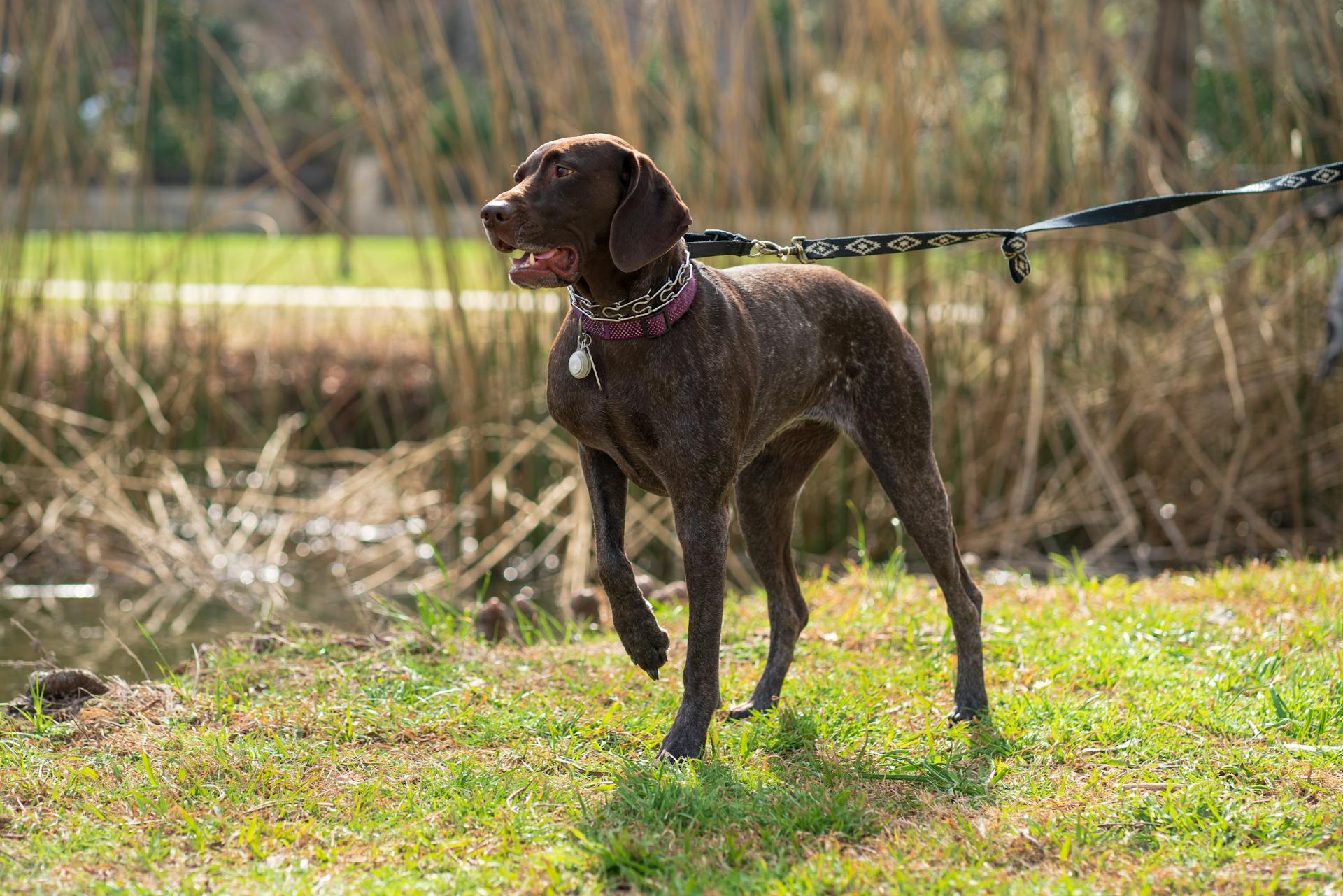
Feeding your Pointer is all about finding the right balance. A highly active dog will need more food than a couch potato dog, so it's essential to consider your dog's lifestyle when deciding how much to feed.
You should feed your adult Pointer 2 to 3 cups of high-quality dry food a day, divided into two meals. This daily amount will vary depending on your dog's size, age, build, metabolism, and activity level.
Dogs are individuals, just like people, and they don't all need the same amount of food. The quality of dog food you buy also makes a difference - the better the dog food, the further it will go toward nourishing your dog.
Measuring your dog's food and feeding him twice a day rather than leaving food out all the time will help keep his physique sleek. This is especially important for Pointers, as they can easily become overweight.
If you're unsure whether your Pointer is overweight, give him the hands-on test: place your hands on his back, thumbs along the spine and the fingers spread downward. You should be able to feel but not see his ribs.
Are Considered Healthy?

English pointers are generally considered healthy, but like any breed, they're susceptible to certain medical conditions.
As deep-chested dogs, they're prone to bloating while eating, so it's essential to monitor their food intake and ensure they're not gobbling down their meals too quickly.
Hip dysplasia is another potential issue that can affect English pointers, so regular exercise and a balanced diet are crucial for maintaining healthy joints.
Eye disorders can also be a concern for this breed, so it's vital to keep an eye out for any signs of vision problems, such as squinting or pawing at their eyes.
Dental infections can be a significant health issue for English pointers, so regular brushing and dental check-ups are a must to keep their teeth and gums healthy.
Puppy Starter Kit: What to Buy
Our puppy starter kit is designed to help you and your pup focus on bonding rather than last-minute shopping trips.
First and foremost, you'll need to prepare a safe and comfortable space for your new pup. A puppy starter kit will typically include a crate to provide a cozy den for your pup to sleep and relax in.
You'll also want to stock up on puppy essentials like food, water, and a collar. Our starter kit recommends a high-quality puppy food that meets your pup's nutritional needs.
A collar is also a must-have, and we recommend a puppy-sized collar with a secure buckle. This will ensure your pup's safety and prevent any potential choking hazards.
In addition to these basics, you'll also want to prepare for your pup's grooming needs. Our starter kit includes a brush and nail clippers to help keep your pup's coat clean and healthy.
Remember, preparation is key to a happy and easy transition for both you and your pup. By having all the necessary supplies on hand, you'll be able to focus on bonding and building a strong relationship with your new furry friend.
Hunting and Training
English pointers are natural hunters, bred to follow their instincts and prey drive, making them a great breed for hunting and tracking activities.
They'll get easily distracted by nearby movement or activity, so it's essential to use positive reinforcement and reward-based training methods to keep their focus on you.
Their athleticism makes them well-suited for agility training and dog sports, particularly activities that involve tracking and nose work.
Nicole Qualtieri, an experienced hunter, notes that English pointers are impressive to follow in the field, with their stone-set point allowing hunters to get within shooting range.
However, their independent nature can make them stubborn at times, so consistent training sessions are crucial to learn obedience and social skills.
To train your English pointer, start when they're a puppy, ideally between 8-10 weeks old, to ensure a strong bond and working relationship.
A positive reinforcement training methodology that rewards treats, toy time, and praise is necessary for your pointer to learn and become a well-mannered pup.
Hunting with the
Hunting with the English Pointer is a thrilling experience, as I've had the chance to do it myself. They're an impressive breed to follow.
Their work ethic is written into their DNA, making them joyfully eager to please. They may judge you when you miss the shot, but they'll also try their best to get that bird.
A pointing breed with less retrieving bred into their system, English Pointers excel at freezing in place, allowing hunters time to get within shooting range. Their stone-set manner is priceless.
English Pointers fare better in heat than cold weather, and prefer to run big, making them a great choice for horseback hunters. They're intelligent dogs, and versatility can be trained into their system.
If you're considering an English Pointer for hunting, be prepared to keep up with their energetic pace.
Training Dogs
Training your English Pointer requires patience and consistency. They're intelligent, but independent, so it's essential to start training early, ideally from 8-10 weeks old. This allows for a strong bond to form between you and your puppy.
Positive reinforcement training is key, using treats and praise to keep their focus on you. Their natural athleticism means they excel in agility training and dog sports, especially those that involve tracking and nose work.
English Pointers love to work and follow their instincts, so use this to your advantage when training. Reward them with treats, toy time, and praise to encourage good behavior.
It's crucial to avoid fear, pain, or intimidation in training, as this can create anxiety and make training more difficult. Instead, focus on building a strong, communicative relationship with your Pointer.
To make training more effective, consider the following tips:
- Use positive reinforcement methods, such as treats and praise.
- Start training early, ideally from 8-10 weeks old.
- Focus on building a strong, communicative relationship with your Pointer.
- Avoid fear, pain, or intimidation in training.
By following these tips and being patient, you can develop a well-mannered and well-behaved English Pointer.
Breed Characteristics
English pointers are a playful breed that generally get along well with other dogs. They thrive on exercise, outdoor play, and lots of love and attention.
Their high energy level means they fare better in homes with large open spaces rather than smaller units and apartments. This is especially important if you have kids who love to run around.
Pointers are intelligent and fun-loving, confident, and don't take things personally. They enjoy the company of people, including kids and babies, and other dogs.
Their short and fine coat requires minimal maintenance, just a weekly brush or wipe-down is enough. A bath every four to six weeks is recommended to keep them clean and healthy.
Pointers were originally bred to point out prey, so they have a high prey drive and may not be suitable for homes with small pets like cats or birds unless properly trained and socialized.
Temperament
English pointers are a high-energy breed that thrive on exercise, outdoor play, and lots of love and attention.
They are generally good with children, but may be reserved when strangers approach.
Their hunting roots mean caution should be exercised around cats and other smaller animals, especially birds.
English pointers are quick to pick up on cues and are very trainable dogs - you just need to put the time in and stay consistent with training.
They tend to get sidetracked during training sessions, so it's essential to provide blocks of undivided attention.
Pointers are not usually fearful or anxious in nature, so aggression and dog bites are typically uncommon with proper training and socialization.
They are hard workers who work through challenges and don't give up on things easily, but sometimes what they work hard at is what they find to be most important in that moment.
English pointers need early socialization and training to ensure they grow up to be well-rounded dogs.
With proper training and socialization, they can get along well with other dogs and even live with cats, but this must start at an early age to contend with their high prey drive.
Pointers are great family dogs and are generally good with children, but it's essential to remember that they are high-energy dogs that need plenty of exercise and mental stimulation.
A tired Pointer is a happy, couch potato Pointer, so make sure to provide them with plenty of physical and mental activity throughout the day.
Health
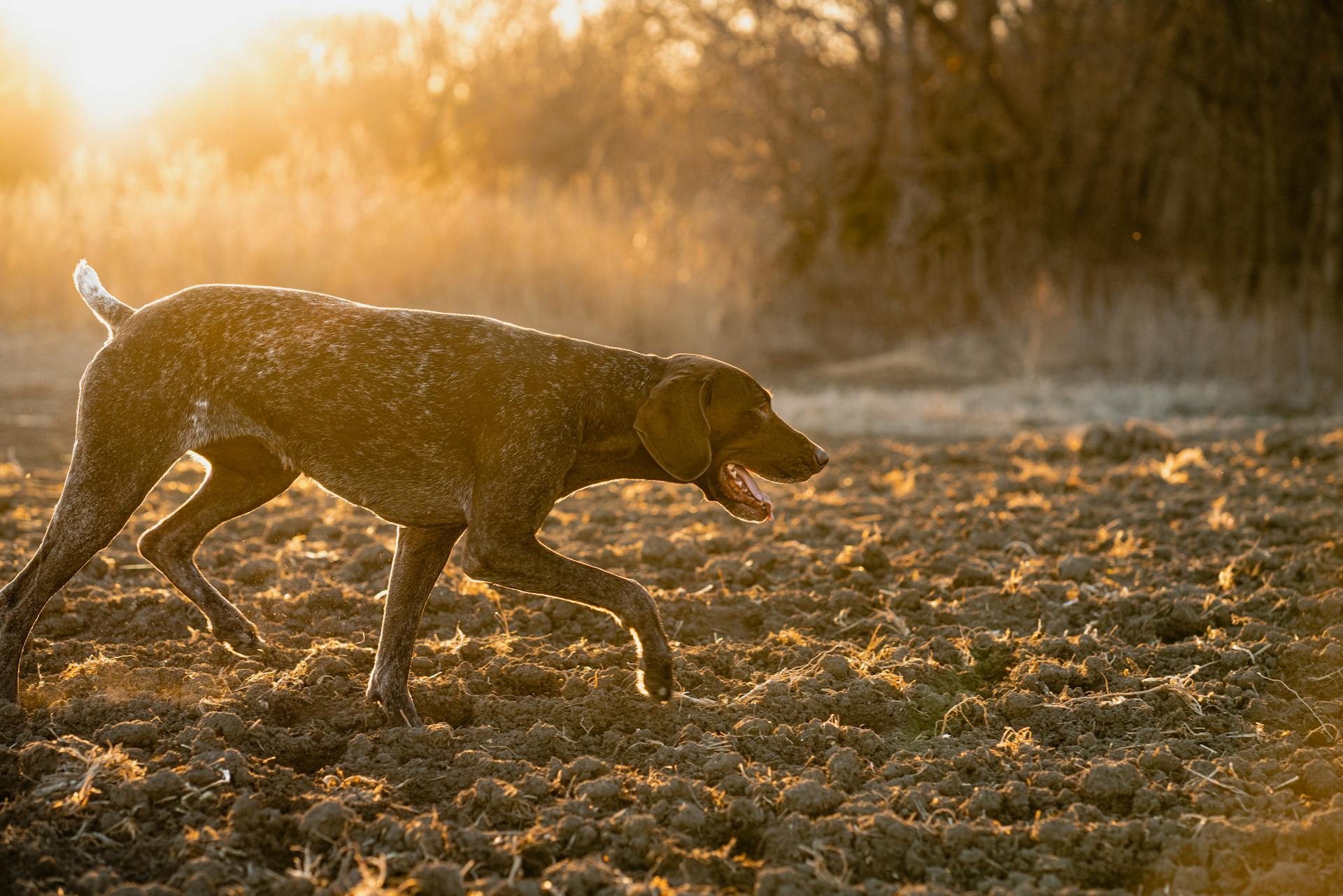
English pointers are generally considered to be a very healthy breed with a long lifespan of 12-17 years.
However, like all breeds, they can be prone to certain health issues. Hip dysplasia is a common problem in English pointers, which can cause instability in the joint between the head of the femur bone and the hip socket.
This can lead to arthritis down the road if left untreated. Some English pointers may start showing signs of hip dysplasia as young as 4 months old.
English pointers are also susceptible to gastric dilatation volvulus, also known as bloat, which can be a life-threatening condition. This occurs when the stomach twists on itself and can be caused by deep-chested dogs like English pointers.
Cataracts are another common health issue in English pointers, which can cause cloudiness in the lenses of their eyes and potentially lead to blindness.
Dental disease is also a problem in English pointers, which can infect their teeth and gums and have a negative impact on vital organs like the heart, liver, and kidneys.
Here are some common health issues in English pointers:
- Hip dysplasia
- Gastric dilatation volvulus (bloat)
- Cataracts
- Dental disease
- Hypothyroidism
Appearance
The English pointer is a dog built for speed and endurance. Their ears hang close to their face, with a long muzzle that ends in a slightly upturned nose.
You'll typically spot English pointers with a bi-colored coat of white with liver, black, or orange-colored patches. Tri-colored pointers are less common.
Their short coat sheds lightly year-round and doesn't require much maintenance. A weekly brush or wipe-down is all they need.
In cold weather, their short coat doesn't fare well, so you may need to take precautions on walks.
Here's a quick rundown of the pointer's physical characteristics:
Their short coat doesn't require much grooming, but regular brushing and occasional wiping down will keep them clean and healthy.
Breeds Similar to
If you're considering an English pointer but not sure if it's the right fit, there are several breeds that share similar characteristics. The German shorthaired pointer, for instance, has a similar coat and size to the English pointer, making them often mistaken for one another.
The greyhound breed is another great option to consider. With their lightning-fast speed and ability to hunt with sight, they were actually used in tandem with English pointers to hunt hares in 17th-century England.
If you're looking for a breed that's also bred to hunt, the Weimaraner is a great choice. They thrive in active households with large spaces to run around, which can be a great solution for restless kids.
Here are some key similarities between these breeds and the English pointer:
- German shorthaired pointer: similar coat and size
- Greyhound: similar hunting ability and speed
- Weimaraner: also bred to hunt and thrive in active households
Frequently Asked Questions
Are English Pointers cuddly?
English Pointers are affectionate dogs that love to cuddle and be close to their owners, making them perfect companions for snuggling on the couch or on-the-go adventures. They thrive on human interaction and attention.
Can English Pointers be left alone?
English Pointers require regular exercise and attention, and may develop separation anxiety if left alone for extended periods, making them best suited for active owners who can provide consistent companionship. They thrive with human interaction and need regular breaks from solitude to prevent boredom and destructive behavior.
Are English Pointers rare?
Yes, the English Pointer is a rare breed, with its numbers at an all-time low, according to the Kennel Club. This decline has put the breed at risk of extinction, highlighting the need for conservation efforts.
What breeds make up English Pointer?
The English Pointer breed is thought to have been established with the influence of greyhounds, foxhounds, bloodhounds, and bull terriers. These breeds contributed to the development of the English Pointer's distinctive characteristics and abilities.
How can you tell if your dog is an English Pointer?
Check for a long, chiseled head, distinctive 'dish' face, and a short, tapered tail to determine if your dog is an English Pointer
Featured Images: pexels.com
